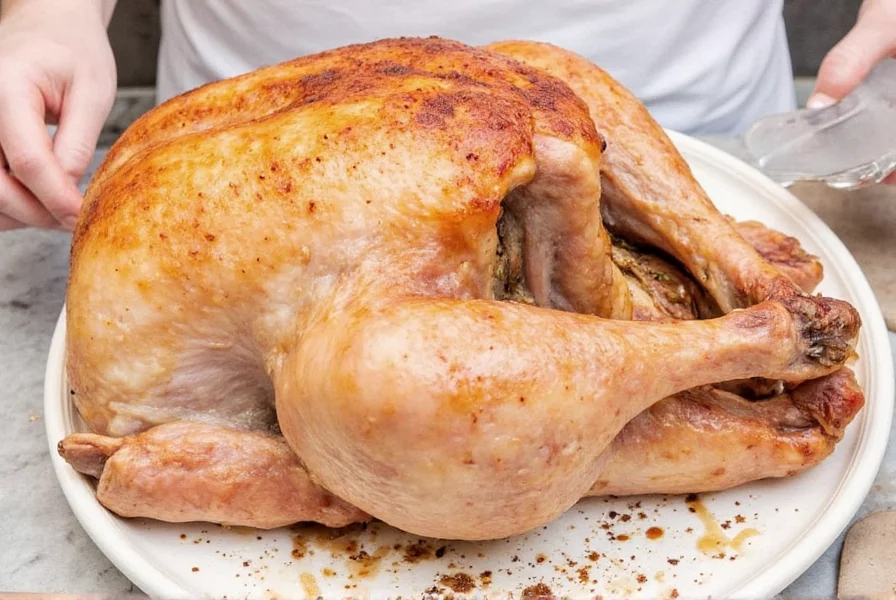
How to Brine a Turkey: Step-by-Step Guide for Juicy, Flavorful Results
Brining a turkey is a simple process that ensures moist, flavorful meat. Follow these essential steps to prepare your turkey perfectly for any holiday meal. Proper brining prevents dryness, enhances flavor, and improves texture while ensuring food safety.
Step 1: Prepare Your Brine Solution
The foundation of a successful brine is balancing salt, sugar, and liquid. Use this standard ratio for a 12-14 lb turkey:
- 1 cup kosher salt (adjust for table salt: ½ cup)
- ½ cup brown sugar or honey
- 1 gallon cold water or broth
| Type of Salt | Texture | Usage Tip | Best For |
|---|---|---|---|
| Kosher Salt | Rough, flaky | Ideal for even distribution | Brines, rubs |
| Sea Salt | Crunchy, coarse | Add at end for texture | Dry brines, finishing |
| Table Salt | Fine, granular | Melts quickly | Wet brines, soups |
Step 2: Add Flavor Enhancers
Enhance your brine with aromatics and complementary flavors:
- Sweetness: ¼-½ cup brown sugar, honey, or maple syrup
- Herbs: Fresh rosemary, thyme, sage (for short brines) or dried versions (for longer brines)
- Aromatics: Lemon/orange zest, minced garlic, chopped onion, whole peppercorns
- Liquid Variations: Replace 1-2 cups water with apple cider, white wine, or chicken broth
Step 3: Brine Properly for Safety and Results
| Turkey Size | Wet Brine Time | Dry Brine Time |
|---|---|---|
| Under 10 lbs | 6-12 hours | 12-24 hours |
| 10-14 lbs | 12-24 hours | 24-36 hours |
| Over 14 lbs | 24-48 hours | 36-48 hours |
Important Safety Notes:
- Always keep turkey refrigerated during brining (below 40°F)
- Never brine a frozen turkey - thaw completely first
- Use food-safe containers only (glass, ceramic, or food-grade plastic)
Step 4: Rinse and Prepare for Cooking
- Wet Brine: Rinse turkey thoroughly under cold water to remove excess salt, then pat dry
- Dry Brine: Do not rinse - simply pat dry before roasting
- Allow turkey to air-dry in refrigerator for 1-2 hours before cooking for crispier skin
Advanced Flavor Hacks
Once you've mastered the basics, try these enhancements:
- Heat Boost: Add 1-2 sliced jalapeños or ½ tsp cayenne for subtle spice
- Herb Timing: Add fresh herbs during the last 12 hours of brining for brighter flavor
- Storage Tips: Keep leftover spice blends in airtight containers away from light; salt/sugar mixes last indefinitely
Frequently Asked Questions
Buying Guide: Top Turkey Brine Kits
For convenience without compromising quality, consider these trusted options:
- Morton Tender Quick Original: Fast-acting blend for quick brines (ideal for weeknight meals)
- The Brinery Co. Turkey Brine Kit: All-natural citrus and herb blend for traditional holiday roasts
- Weber Smokey Mountain Brine Mix: Hickory-smoked blend for grilled or smoked turkeys
Conclusion
Mastering turkey brining transforms dry, bland meat into succulent, flavorful perfection. By following these step-by-step instructions, you'll ensure food safety while maximizing flavor and moisture. Remember: proper timing, safe handling, and balanced ingredients are the keys to holiday success. Now go impress your guests with the juiciest turkey they've ever tasted!










 浙公网安备
33010002000092号
浙公网安备
33010002000092号 浙B2-20120091-4
浙B2-20120091-4